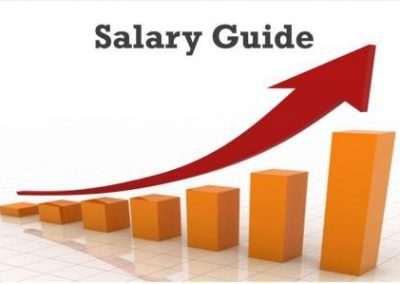Salary Guide for Heat Treat Equipment OEMs
What does a project engineer at furnace builders Surface Combustion or AFC-Holcroft get paid? How about a field service engineer at a controls company such as Nitrex or Eurotherm?
Josh Hale of International Search Partners [email protected], the leader in recruiting for the heat treatment industry tells us in his “Salary Guide for Heat Treat Equipment OEMs”. This article follows hard on the heals of his Salary Guide for the commercial heat treating industry. Stay tuned for a third article next week.
Salary Guide for Heat Treat Equipment OEMs
As with commercial heat treats, job descriptions and requisite salaries for furnace and oven OEMs can vary quite a bit depending on geography, job specs, size of company, etc. Caveats aside, the following offers a glimpse into the current market-value for most job functions within a heat treat equipment manufacturer.
An important note: the below information focuses primarily on salary data and does not account for non-cash incentives such as vacation, flexible work schedules, incentive bonuses, profit sharing, etc. Overall compensation has increased rapidly across the board since the last iteration of this guide and many companies have gotten creative in looking outside base wages to entice and retain employees.
Mechanical, Electrical and Project Engineers: Engineering is a key function for any OEM and these are typically degreed individuals who handle project management and will often act as the project lead regarding equipment design. Electrical Engineers will generally not be the lead on a single project but will spread themselves out over several projects, whereas Mechanical Engineers are more likely to see a specific project cradle-to-grave. Project Engineers are lumped into this category, but often occupy a unique space in the Venn diagram between engineering, applications, management, service, and sales.
Typical salary ranges for engineers can vary quite a bit depending on total number years of experience, but usually falls anywhere from $90k up to around $120k and can go up from there for someone with several years’ experience of niche expertise.
Designers, Draftsman, Detailers (mechanical or electrical): These are typically non-degreed individuals who are the backbone of every engineering or design department and handles drawings, schematics, and software design.
They are usually paid hourly, although some may be exempt, and earn anywhere from $25-40+/hr.
Application Engineers: Also called Proposal Engineers, Estimators, or Inside Sales Associates, Applications Engineers are responsible for the quotes and pricing that gets sent to prospective customers and act as a liaison between sales, engineering, production, and customer.
Entry-level salaries for Apps Engineers start at around $65k but can easily reach up to the low six figures for those who have niche technical expertise and may also be incentivized with bonuses or commission if they work closely with outside sales to close deals.
Field Service Engineers: FSEs are a unique breed of technical “road warriors,” who love to travel and spend days, weeks, or sometimes even months away from home. These hands-on technicians work on installations, commissioning, and start-ups of equipment all over the world. They are almost always non-exempt employees who earn a significant percentage of their income from OT.
Good ones are often making over $100K in any given year with a base pay rate in the $30-40/hr range. That said, this is undoubtedly the most competitive job functions in the industry and pay is rising rapidly as companies try to lure new hires away from their existing employers.
Sales Engineers: Two types of compensation plans are prevalent for sales. One type of plan is salary only, commensurate with experience. The other is salary plus commission or bonus. Generally, OEMs who have a very technical, custom designed product and a long sales cycle will incentivize their sales engineers mainly with base salary and perhaps a small incentive bonus that could be based on measured activity, sales, or gross profits. This works well for both parties since it can be hard to determine a commission percentage for a sale that might be years in the making, but at the same time any good salesman is driven by the hunt and wants to “eat his kill.”
Whatever mix of base and commission, most sales engineers are earning somewhere in the low to mid $100k’s + incentives and car allowance.
VP/GM/Production/Other: This is not a completely exhaustive list of positions within an OEM but covers most of the major roles that require experience and/or technical knowledge. VPs and GMs were intentionally left out because compensation varies so wildly at the top of the pyramid and usually involves other factors such as stock options, equity, or bonuses.
While there is high demand for hourly production workers, fabricators, assemblers, and the like, most companies don’t require much experience for these types of roles and will offer market rates and training to attract entry-level talent or recent technical school graduate to fulfill these needs.
This salary information has been culled together based on data International Search Partners has collected from over 20 years of providing recruiting solutions exclusively to the heat treat industry. There are many variables to consider, and it is becoming quite common for companies to have hybrid roles that are not specifically addressed here. That said, this guide provides a solid, accurate baseline of information and is meant to be used a reference for employers and employees alike. For specific salary questions, or to inquire about more about recruiting and placement solutions, please contact Josh Hale at [email protected] or call 619-828-1040.”
Did you like this article? Click here to subscribe to The Monty.
View our recent magazines and podcasts by clicking the following link. https://themonty.com/magazine/

